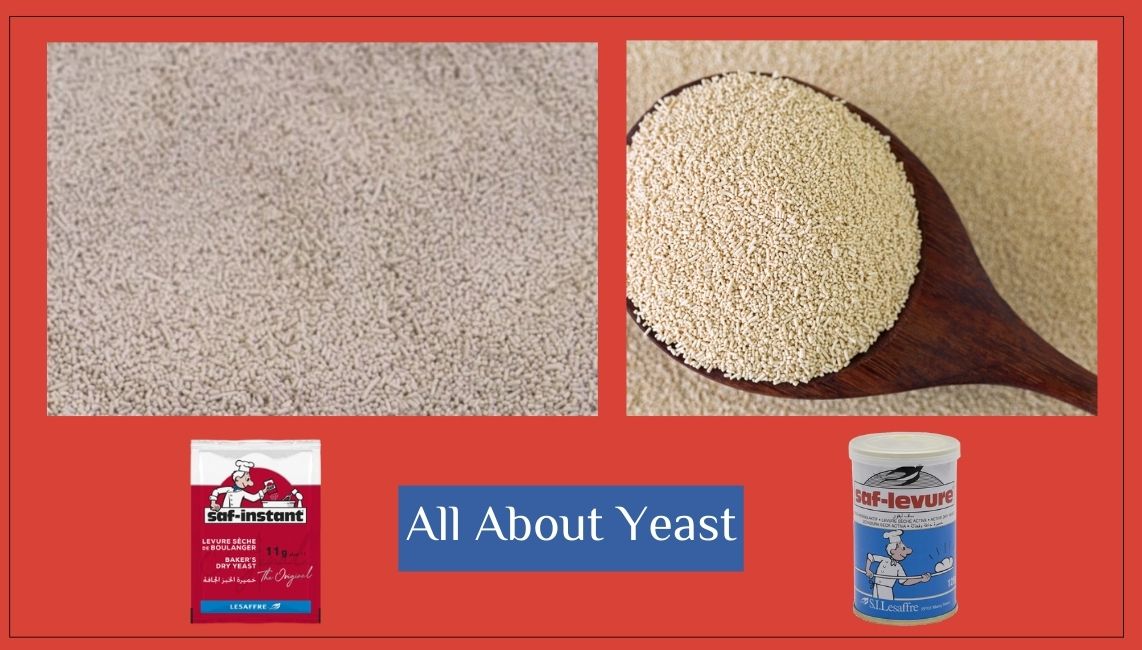Fresh, dry or active dry, yeast varies between countries, traditions and environments. All of them will work to leaven doughs in any given yeasted baking recipe, but each has slightly different properties, and varying flavors.
Understanding the difference, knowing which yeast is the best for your recipe can make a big difference in your baking experience.
Let’s take a quick look to the types of yeast for baking.
Instant Dry Yeast

Its name comes from the fact that it is not necessary to rehydrate it before adding it to flour. Instant dry yeast is as easy to use as pressed yeast. The fine particles of instant yeast are vacuum-packed or protection-packed.
Usage: Instant yeast is another form of passive dry yeast with smaller granules than active dry and a faster absorption rate. Instant yeast does not need to be proofed or rehydrated before you bake with it, so you can mix it straight into your dry ingredients.

Storage tips: Can be stored unopened for up to 24 months at ambient temperatures. When opened, it can be refrigerated up to 3 months, or frozen up to 6 months.
How to replace instant dry yeast with active dry yeast?
To substitute active dry for instant (or rapid rise) yeast: Use 25 percent more active dry.
For example, if the recipe includes for the one teaspoon of instant yeast, use 1/4 teaspoons of active dry.
Active Dry Yeast

Active dry yeast comes in the form of granules or beads. Its rustic character ensures good stability at room temperature, appreciated in places with unfavourable climatic conditions (high temperature and humidity).
Usage: Because active dry yeast is alive but passive in its packaged state, you must rehydrate it via proofing, or dissolving the granules in warm water (ideally between 40ºC and 46ºC). It’s finishing blooming when the yeast is dissolved and small bubbles rise to the top of the water glass.

Storage tips: Can be stored unopened for up to 24 months at ambient temperatures. When opened, it can be refrigerated up to 3 months, or frozen up to 6 months.
How to replace active dry yeast with instant dry yeast?
To substitute instant (or rapid rise) yeast for active dry: Use about 25 percent less.
For example if the recipe calls for 1 packet 1/4 teaspoons of active dry yeast, use 1 3/4 teaspoons of instant yeast.
Compressed (Fresh) Yeast

Compressed yeast is a type of baker’s yeast that comes in a solid form. It is also recognized as wet or fresh yeast.It is soft and requires no proofing.
Usage: It is soft and crumbly and requires no proofing—fresh yeast will dissolve if it is simply rubbed into sugar or dropped into warm liquid.
Storage tips: Must be stored in refrigerator and used before its expiry date.
How to replace compressed yeast with instant dry yeast?
A 100g of compressed yeast can be replaced by 40g instant dry yeast and 60g water.
Here is some recipe recommendations for you to test your learnings;
https://www.safinstantgulf.com/recipes/naan-bread
https://www.safinstantgulf.com/recipes/whole-wheat-lavash-bread




